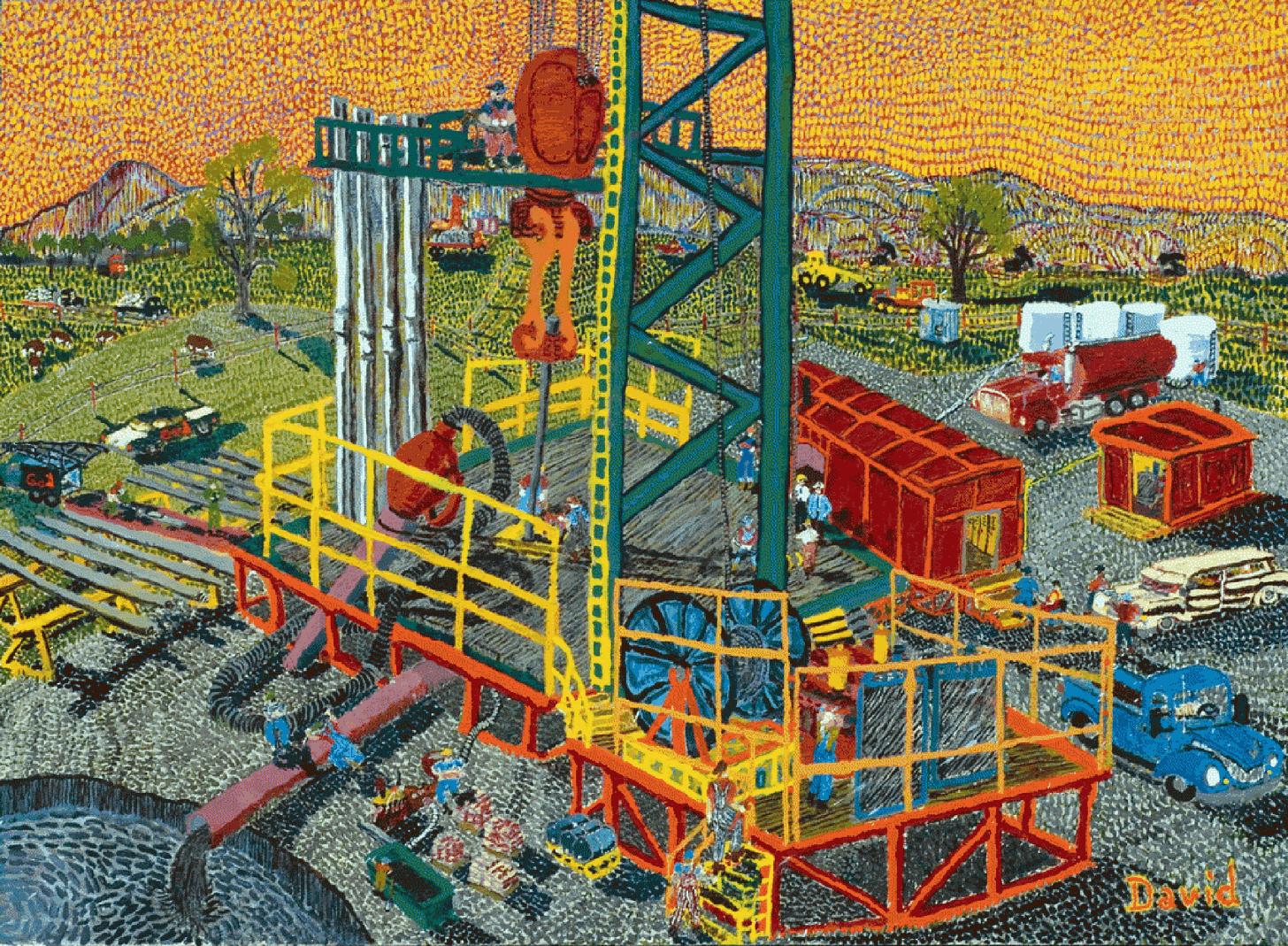Greetings!
I am getting ready for The Lincoln Arts Festival Art for Art’s Sake Show & Sale August 23-25, 2024
I prepared an artist biography, that colors outside the lines of conventional artists’ biographies but it’s the truth about “my brand”. I always thought that ultimately one’s art is one’s life and what one does with it, and so with that brief introduction: Here it is:
Mackenzie Andersen
A Life’s Work
 Peony Drift By Mackenzie Andersen
Peony Drift By Mackenzie Andersen
“Wholeness is the Hidden Variable”- David Bohm
Beginning life in an artist- in residence environment
Mackenzie was raised in an art business in a home. Andersen Design could never have come about if it were not premised on understanding and bringing together complex systems, be they molecular systems that are integral to designing and making ceramics, or human systems, holistic understanding doesn’t distinguish. Everything is everything as they said in the 1960s.
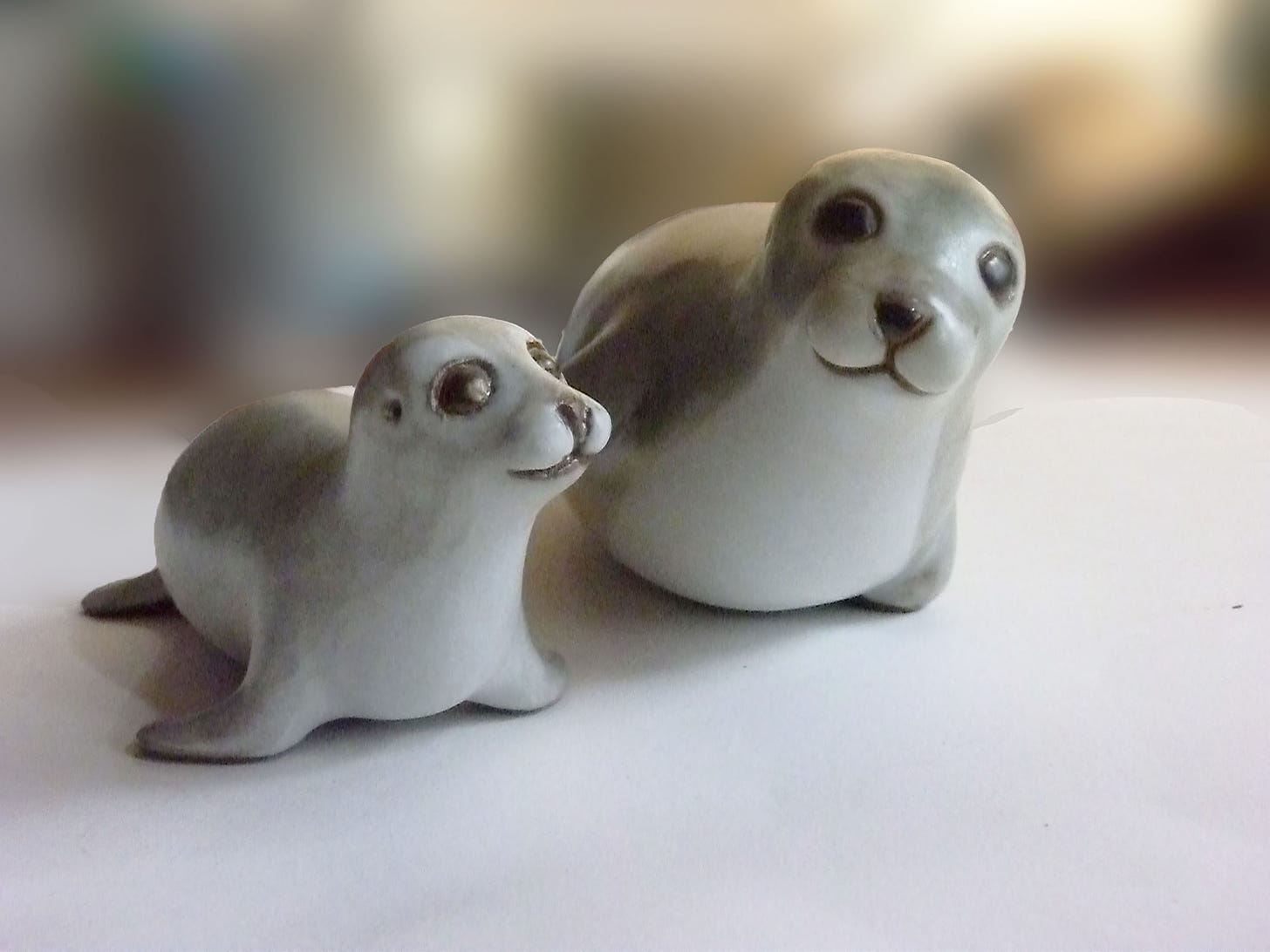 Mother and Baby Seal by Andersen Design. All products were made from raw materials using original body and glaze recipes created by Weston Andersen. Photo by Mackenzie
Mother and Baby Seal by Andersen Design. All products were made from raw materials using original body and glaze recipes created by Weston Andersen. Photo by MackenzieAndersen Design was established here on Southport Island in 1952 and is recognized for its unique functional forms and wildlife sculptures but for Mackenzie, the most important product created by Andersen Design is the philosophy and the work process, a gift she enjoyed and is entrusted to prevail and preserve. `
The current state of the work process created by Andersen Design finds itself today is expressed well by the third line of the Chinese Hexagram, the Well.
The well is cleaned, but no one drinks from it.
This is my heart’s sorrow,
For one might draw from it.
If the king were clear-minded,
Good fortune might be enjoyed in common.
Andersen Design was established as a philosophical response to the Industrial Revolution factories, founded on a mission to create a handmade object affordable to the middle class, which was by far the most prolific economic class in America in 1952.
When Mackenzie was growing up she took the abundant middle class to be the norm but history has moved on and the era in which Andersen Design was established now looks like an anomaly, not a norm, all the more reason to preserve Andersen’s productivity assets, created at a uniquely opportune moment in history, and place them so that they can be used to benefit budding grassroots entrepreneurs and contribute to a new middle-class economy.
Committed to the belief that the work process is foundational to human well-being, the Andersens believed that the process should be meaningful and engaging. So, they conceived production as an art form, the core principle of the Andersen Design “company culture”. The ceramic medium was a natural choice because it is relatively affordable and has fascinated mankind since the beginning of history.
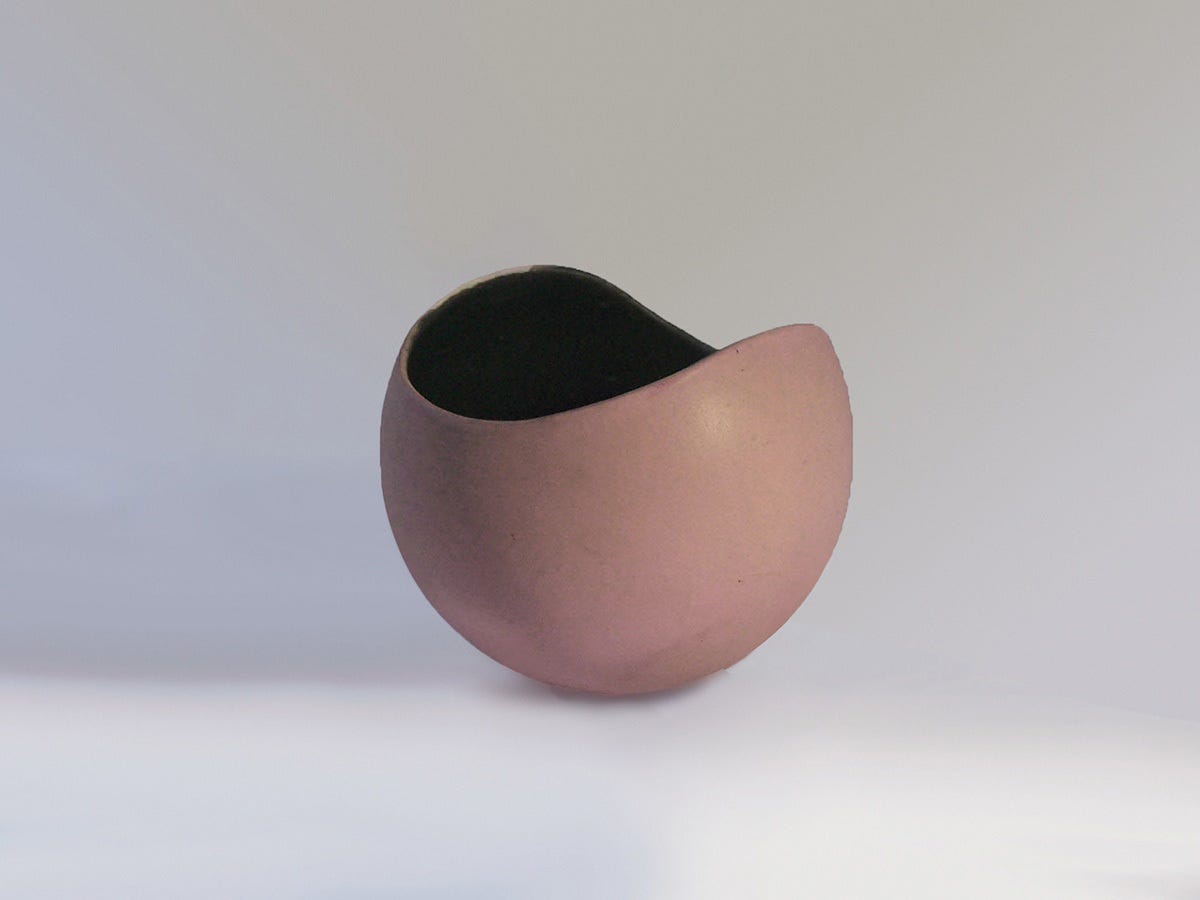 Very early sugar bowl by Weston in Pink and black glaze
Very early sugar bowl by Weston in Pink and black glaze
When the Andersens started making ceramics they were living in a housing development in Ohio that would not permit a business in a home so they moved to Maine where they had the freedom to pursue their art independently as grassroots entrepreneurs.
Andersen Design grew through the then-abundant middle-class marketplace, foregoing competitions and awards. Recognition came through the many stores that sold the Andersen products and the people who collected them. Andersen’s customers spontaneously identified the Andersen products as art, affirming that art is in the eye of the perceiver.
Today, Mackenzie works alone on a mission to continue the founding purpose of Andersen Design, founded on the belief that an engaging work process is fundamental to well-being. The mission will succeed only if new collaborators are found but conventional local and state resources have proven fruitless.
Mackenzie’s local economic development council responded to Makenzie’s proposal for a Makers Museum by telling her to “Go get help from your own peer group”.
Mackenzie identifies the Lincoln Arts Festival and its patrons as a peer group of individuals and small entrepreneurs and so is presenting her project and a call for collaborators at the festival. If you have an interest in collaborative involvement, please stop by and make yourself known at the show. Many pieces have to come together to make it happen including funding, crafters interested in producing the line in their studios, legal frameworks, and marketing. Most of all it needs a team.
The Idea
Home businesses are not included in the cultural map or included in the housing and economic development discussions, but they are important among the working classes, including the growing remote work movement, Home working spaces have always been essential to artists whose inspiration happens on its own timing and is internally driven.\
Mackenzie Andersen writes about her journey in and through the world and promotes her vision in her Substack newsletter, The Individual vs The Empire. Through writing and research, she has developed supportive connections, such as Mackenzie’s fiscal sponsorship by the Field, which allows her access to non-profit funding resources.
The non-profit sector imposes its own rules of exclusivity, barring individuals and small free enterprise entrepreneurs from participating. The Maine Community Foundation and the Davis Foundation both with a high-profile presence in Maine forbid fiscally sponsored individuals and free enterprises from submitting community proposals for grant funding.
Mackenzie was invited to be a peer reviewer for Humanities and Social Sciences Communications. The first paper she reviewed was on Marx with a theme premised on the idea that for the outsiders to become a part of society, they must change society.
During the years when the world was transitioning to an online community, Mackenzie was looking for recapitalization and encountered unresponsive state programs. She looked up the statute for one particular program and kept on reading the statutes until she could see the forest through the trees. She saw that the centrally managed economy had triumphed over her constitutional home-rule state, asserting a hierarchical form of government over the heterarchical organization intended by Maine’s Home Rule Amendment. She envisioned the new productive capacity of Andersen Design as a heterarchical network of independently owned but collaborative working studios. Was she naive, she wondered?
Then it came to be that Mackenzie was courted by many Art Storefronts sales agents. She had been aware of Arts Storefronts for quite some time but had not looked closely. What she discovered amazed her. Here was a company that does not have a corporate face, no website displaying hundreds of thousands of artists. Instead, the face of Arts Storefronts is the individual artist storefronts. That’s a bold and courageous choice! How unique! That’s grassroots! And it’s individualistic! A return to the Cottage Industries and back to Main Street, the very opposite of the top-down hierarchy that dominates most of society.
Here was the heterarchial network that Mackenzie envisioned for the future of Andersen Design and it was already up and running as a collaborative network of artists and small entrepreneurs. Artists create designs that can be ordered as prints and merchandise, without the artist having to make a large capital investment. In turn, the artists creates business for the printers and merchandise providers. What a great idea! And Art Storefronts has a great human support system that creates a sense of community.
 The Eye of the White Rugosa Rose by Mackenzie Andersen
The Eye of the White Rugosa Rose by Mackenzie Andersen
Mackenzie envisioned Andersen Design becoming a merchandise provider of hand-crafted functional forms. There is abundant creativity happening in decals today and it is a much easier starting point than working with original ceramic bodies and glazes. If Andersen Design continues, Mackenzie envisions the continuation of research and development in new bodies and glazes but original technological development presents challenging intellectual property rights issues, that are not an issue with decals.
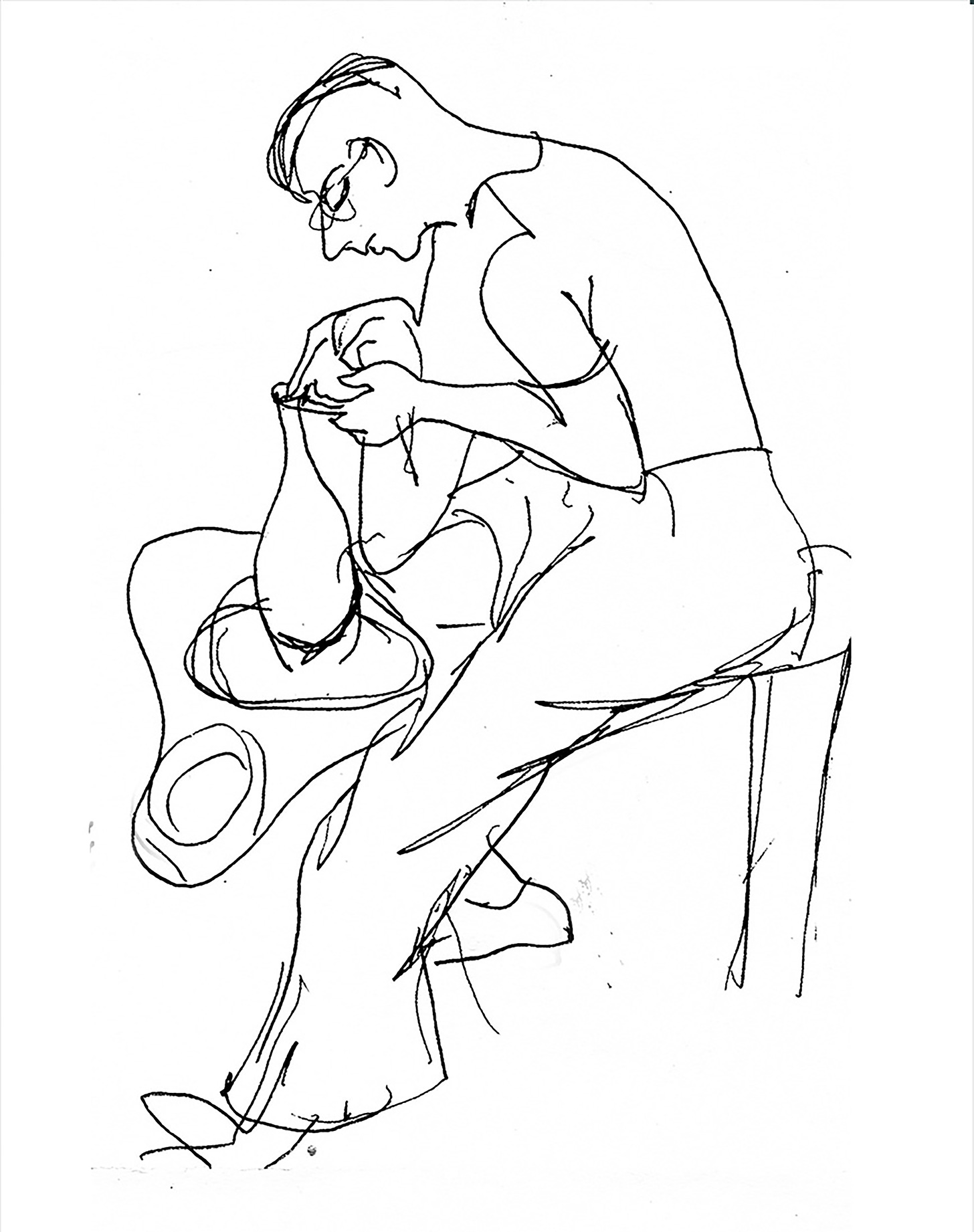 Decal designs can be used in a multitude of ways. Brenda’s drawing of Weston as a young man at the Potters Wheel is a natural for a Tshirt.
Decal designs can be used in a multitude of ways. Brenda’s drawing of Weston as a young man at the Potters Wheel is a natural for a Tshirt.
If a network of Andersen producers can be established, would it be possible to become a handmade merchandise provider collaborating with Art Storefronts? There are so many possibilities and hundreds of original molds for slip-cast designs, an established base of collectors, and a brand identity that can help others establish and grow their creative careers.
Imagine what can be done with Sheeba and decal art!
 Weston Prototype of Sheeba, the archetypical female element of nature
Weston Prototype of Sheeba, the archetypical female element of nature
But before that can be done, there has to be a network of studios that can produce Andersen’s original forms, many that are highly marketable reproduction pieces with established finishes, and others that are like canvases that can be reinterpreted infinitely through the individual artisan’s hand, eye, knowledge, and creativity. The large body of original molds are a productivity asset. The large inventory of original molds for slip-cast designs came about the only way it could, through decades of creative work. created by human productivity that can be used to further future human productivity. The line was never overproduced relative to the global marketplace due to the small scale of Andersen’s production, making for still a viable and highly unusual asset.
But Andersen Design, as a grassroots free enterprise, established the old-fashioned Americana way, of pulling one’s self up by the bootstraps, has no local support network in the state of Maine.
However, Andersen Design assets include an established wholesale and retail market and brand name recognition, making it possible to re-introduce the production by working with one studio and one product, and a marketer.
Today a work-at-home movement has established roots and is growing but is not recognized by Maine government economic development and housing policy. In Maine, a new law HP 1489 mandates “priority zones” (intentional communities) in every Maine municipality where no density standards can be applied to developers, and municipal ordinances are forbidden to make references to “character of a location,” “overcrowding of land” and “concentration of the population”. (The US Supreme Court has said that statutes restricting speech content violate the US Constitution’s First Amendment.) The housing developments that are emerging from the new law are inappropriate for the popular remote worker’s movement which requires a private working space in the home, at the bare minimum a space where one can hear one’s self thinking. The new developments, mandated to be in every Maine municipality, barely qualify as rural living with no individual relationship to the land, like city blocks deposited in a rural landscape.
Andersen’s assets provide a basis for engaging work that can be done in or attached to the home, providing that ordinances and architectural spaces accommodate the movement. Currently in Maine, the mass housing developments planned by the state for the year-round residents emulate the housing development the Andersens left behind in Ohio, seeking the freedom to have a business in a home.
The reason priority zones for year-round residents must be established is that the authors of HP 1489 decided to exclude short-term rentals from the study, effectively making short-term rentals the default zoning for the entire state. Is this how the long-standing cultural divide between the year-round and transitional residents will be resolved? Not good social politics! Any other purpose than short-term rentals must be carved out as an intentional community. HP 1489 severely limits the discussion of ideas about housing when it prohibits references to “character of a location,” “overcrowding of land” and “concentration of the population” but the municipal governments to which these speech restrictions apply did not fight back.
The commissioners who wrote the law first decided that short-term rentals would not be regulated by excluding them from the study and then decided that developers of affordable housing would not be regulated, apparently reasoning that the housing shortage was so great that we could no longer afford to apply health standards or any other standards to mass housing developments for year-round residents. Conversation over!
Mackenzie envisions a community project of networked designers and makers and other small entrepreneurs, filling a void in Maine’s economic development policy that offers no support for grassroots entrepreneurs as it subsidizes the capitalization of large corporations in partnership with the state. The excluded community has to be its own support network. Art Storefronts is a working example of a worker and small entrepreneur mutually supporting network.
Through the Field, Mackenzie has found a grant specifically for individuals The process begins with an inquiry to apply that opens on July 31st. Mackenzie’s project concept is to develop an Intentional Community for a Cottage industry Revival, a community that accommodates the remote worker’s movement, artists in residence, and businesses in or attached to a home in a spacious surrounding, which is currently at odds with Maine’s new housing law that restricts municipal ordinances from referencing housing density and community character, excluding the development of diverse options to accommodate the diversity within humanity, from municipal government conversations.
Before Mackenzie became fiscally sponsored by The Field, she applied to Fractured Atlas for fiscal sponsorship, Fractured Atlas rejected Andersen Design’s established purpose as a design and production company when the board redefined “production” to mean “being only in it for the money”, but Fractured Atlas said Andersen Design could apply as a museum.
Thus the idea of the museum was born, central to the concept of the envisioned Intentional Community mirroring the centrality of the Church in the Medieval Marketplace.
However, when Mackenzie approached her local economic development council, which had recently spent 79000.00 of taxpayer money to pay New York consultants to write a plan for the region, a plan that recommended museums, her presentation was neither considered nor acknowledged and she was told: “Go get help from your own peer group”.
Thereafter the regional plan by the New York consultants was largely ignored instead a large public school expansion financed by private funding is being pushed on the community with talk about ”STEAM skills” and “makers spaces”.
Public protest over the exclusion of alternate ideas continues to gather as the school board pushes the singular option of a public school expansion.
Mackenzie believes that privately funded museums can teach making skills and that is a conversation that needs to find a pathway into the public forum. Many agree that there need to be options.
The Art
 One of A Kind Vase by Weston Neil Andersen in organically organized uniform-like dabs of color.
One of A Kind Vase by Weston Neil Andersen in organically organized uniform-like dabs of color.
Every member of the Andersen family was also a graphic artist. Mackenzie’s Art Storefront features the work of the Andersen family of artists. Dad was a sculptor and industrial designer with a talent for creating patterns that appeared as a consistent field without precision plotting and Mother, Brenda’s talent for spontaneously rendered portraits could capture the essence in the flash of an eye!
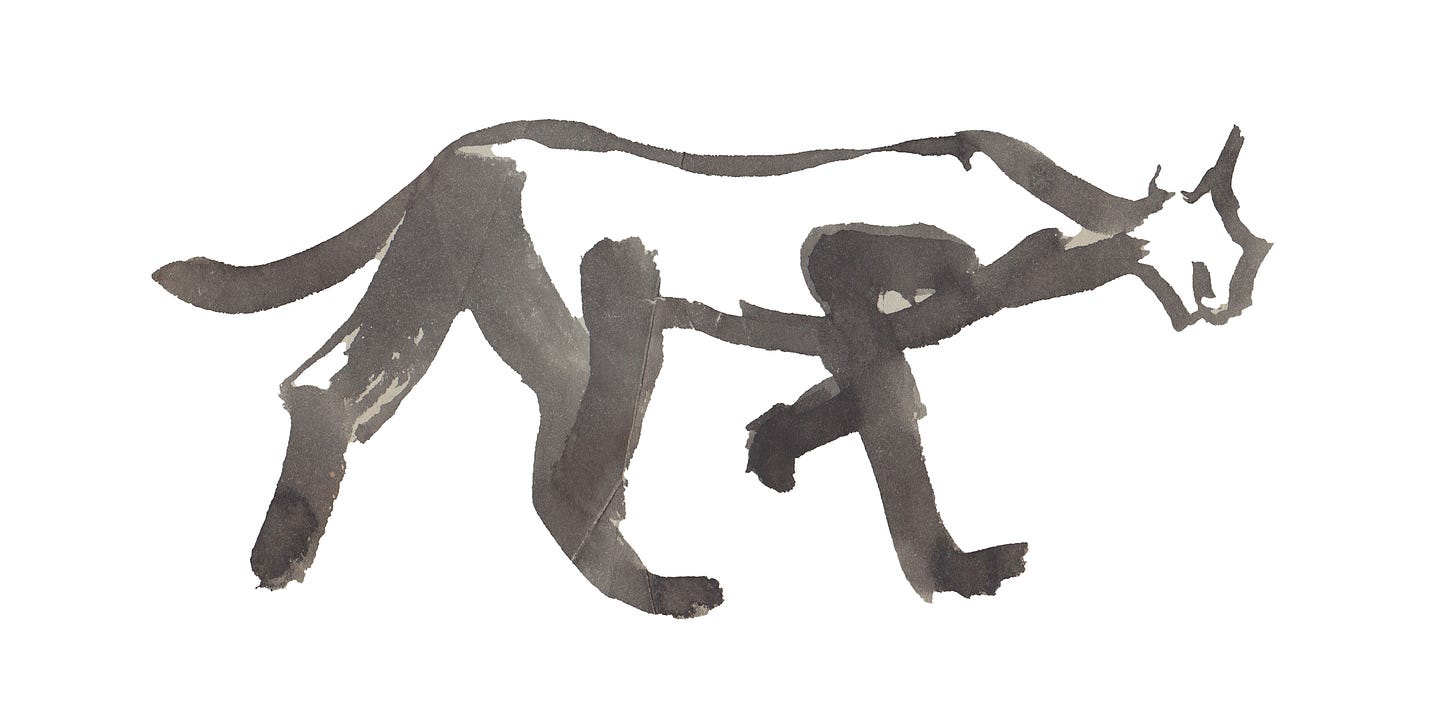 The Determined Cat That Walked By Itself by Brenda Andersen
The Determined Cat That Walked By Itself by Brenda Andersen
Sister Elise’s talent combines those of her parents showing a strong resemblance to Brenda’s drawing talent and Weston’s natural patterning.
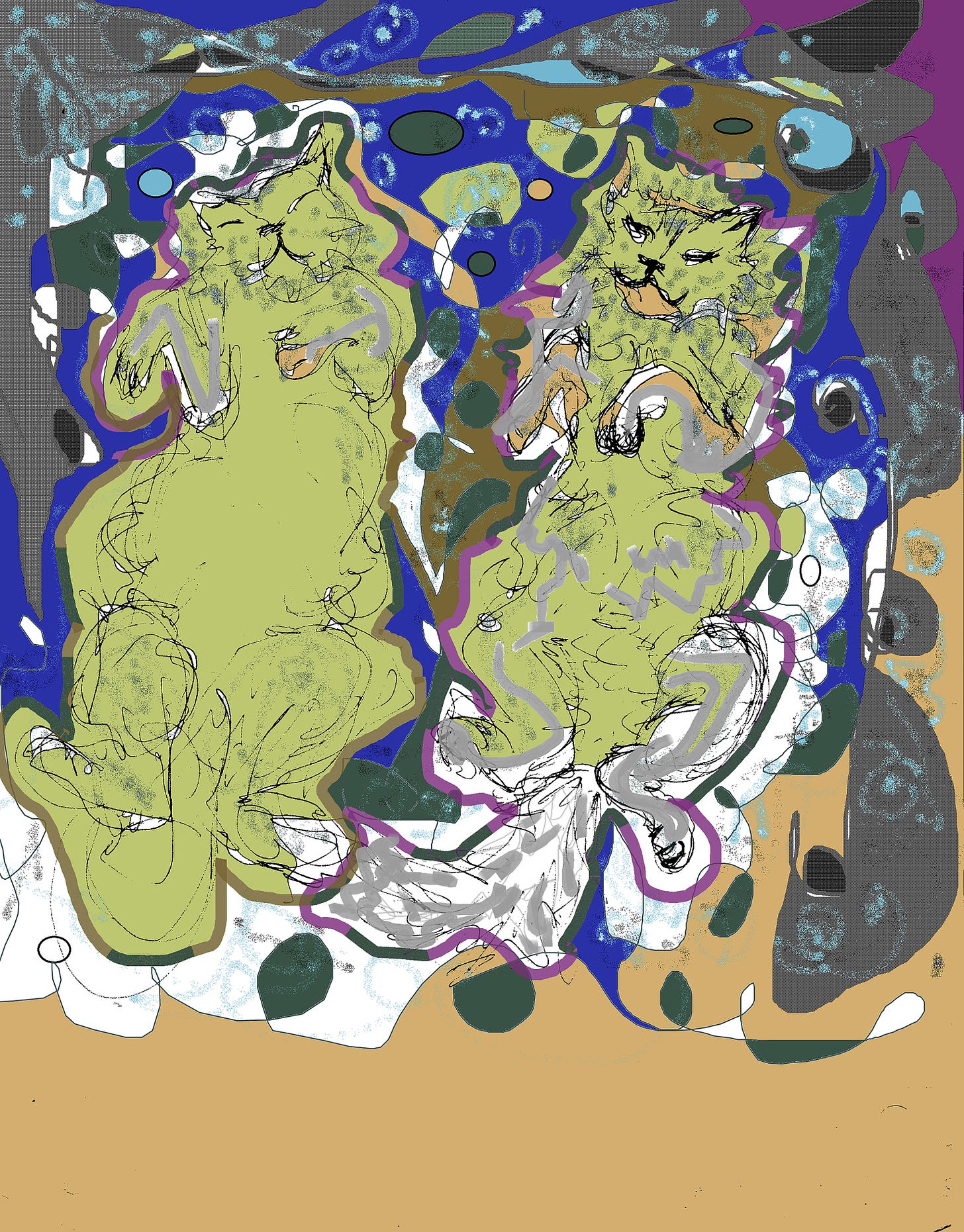 Two Fluffy Cats by Elise Isabel Andersen
Two Fluffy Cats by Elise Isabel Andersen
Brother-in-Law, David Dupree’s paintings are classic folk art executed in pointillism and depicting the scenes of an American life that he lived. (See Article on David’s work in Boothbay Register), David’s paintings can be purchased at Gallery 53 in Boothbay Harbor. You can order prints on a choice of media or merchandise and size on Mackenzie’s Art Storefront.
Mackenzie Andersen, Art Photographer
Mackenzie’s elementary education was growing up in a creative business in a home. Later in her young adulthood, she attended and graduated from Pratt Institute in Brooklyn, New York where she fell in love with the city’s vibrancy and diversity. She stayed longer, working here and there as a textile colorist, a photographic printer, selling advertising for a local NYC art magazine and a waitress and privately she was a painter, in her own studio. When she moved back home to work in the family business, her Dad suggested she photograph the Andersen products, carrying on a tradition started by Weston and Brenda in the early fifties. Captivated by the Mill Pond across the street from the Andersen Homestead, she became a landscape and flower photographer capturing the natural lyrics of Maine’s natural, uncultivated landscape, the beauty of brambles, light streaming across the terrain, ice sparkling on the barren branches in a winter landscape, clouds reflected in the pristine surface of the pond, and field of wildflowers blooming abundantly in abandon.
The Mill Pond constantly changes through sun and mists and stormy weather. The flowers in the garden were ever captivating. Using digital editing Mackenzie adds her own take, captivated by tone and color, mists and light. and the ever-changing seasons. Mackenzie imagines public spaces filled with very large images of flowers and landscapes that bring the lyrical delights of Maines’s natural unmanicured landscape into the public spaces recalling what once was and we may now be losing. Let Maine continue to be different from everywhere else.
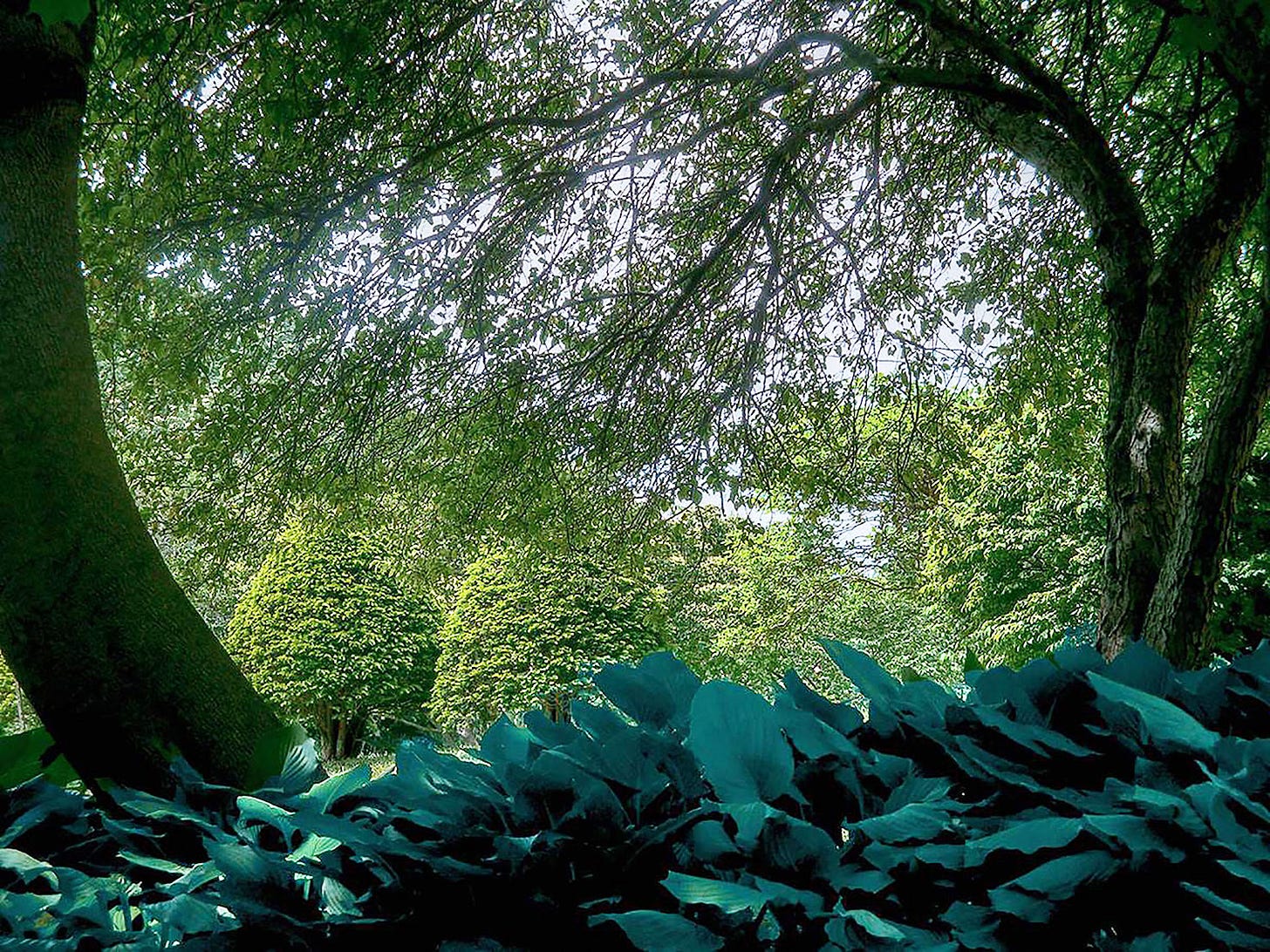 Once there was a Garden, photo by Mackenzie Andersen
Once there was a Garden, photo by Mackenzie Andersen


